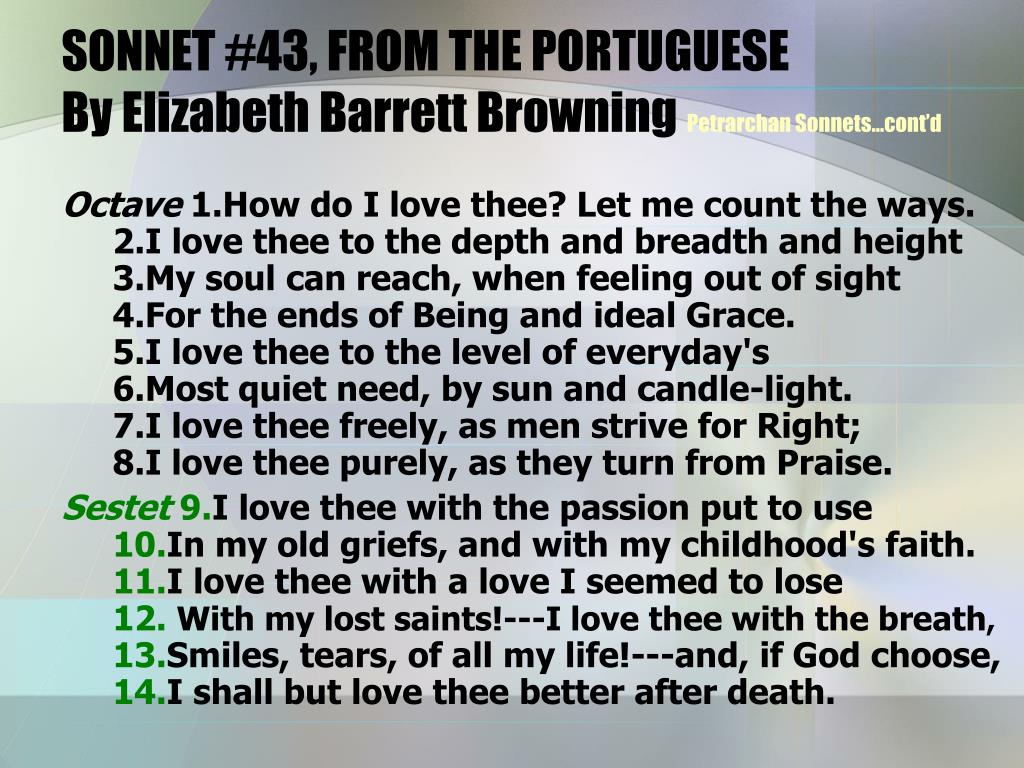
The couplet naturally becomes an exciting "turn" or "twist" in the sonnet, or sometimes a little summary. Here's the point: in a sonnet by Shakespeare, there are four groups of rhyming lines, followed by a couplet. Instead of following Shakespeare or any of the other great English sonneteers, Barrett Browning chose to model her sonnet on the Italian or Petrarchan pattern. What you should know about this rhyme scheme is that it's not a traditional English sonnet pattern like the sonnets that Shakespeare wrote, most of which have more rhymes (they get up to "G" instead of "D" in the rhyme scheme – seven rhyming words instead of just four). Yes, we know, we're in techno-babble again.


The rhyme scheme of this sonnet – are you ready? – is ABBA ABBA CDC DCD. Rhymed: There are several different traditional rhyme schemes for sonnets. This is a fact that English teachers love to repeat, so it's a good one to know. In fact, if you read a poem that's fourteen lines, the odds are that it's a sonnet. OK, now that we've explained that let's take this one feature at a time: Fourteen lines: Every sonnet has fourteen lines. That's one reason this poem feels very conventional, maybe even a little inhibited it's playing by all the rules that it can find. But before you even know what all that means, you can notice that this poem is highly structured – the number of lines, the number of syllables in each line, and the rhyme scheme are all prescribed by the literary tradition for sonnets. Whoa, sorry, we slipped into literary techno-babble there for a moment.

It's a sonnet – a fourteen-line rhymed lyric poem written in iambic pentameter.


 0 kommentar(er)
0 kommentar(er)
